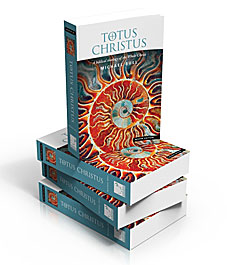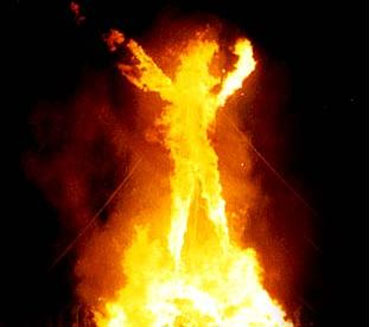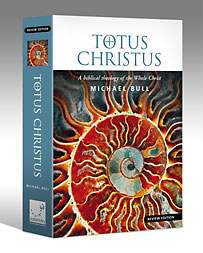Seven Bowls of Wrath
Revelation can’t be fully appreciated without attention to its literary structure. I’m no expert, but have a gander at this…
Revelation can’t be fully appreciated without attention to its literary structure. I’m no expert, but have a gander at this…
Now a river went out of Eden to water the garden, and from there it parted and became four riverheads. The name of the first is Pishon; it is the one which skirts the whole land of Havilah, where there is gold. And the gold of that land is good. Bdellium and the onyx stone are there. The name of the second river is Gihon; it is the one which goes around the whole land of Cush. The name of the third river is Hiddekel; it is the one which goes toward the east of Assyria. The fourth river is the Euphrates. (Genesis 2:10-14)
After the Herod and Shylock post, I had one complaint that the Worship as Commerce tag didn’t really do what it said on the tin, so I hope to capture it (briefly?) here. Now, where to start? As James Jordan explains, the idea begins in Eden.
Continue reading
 .
.
Other than the reviews link at right, and some comments here, I did start a blog for those reading Totus Christus to leave feedback (there is also a link at right under Links tab). If your comments are helpful I will repost them here. So far, people either shake their head in disgust or tell me one chapter was worth the cost of the book (thanks Kelby and Theron!)
If you haven’t ordered one but are thinking about it, don’t delay too long. Once this review edition is gone it might be a while before a final is available.
In the mean time, the simpler Bible Matrix should be available in the U.S. and on Amazon some time during the next 6 months, whether I self-publish (with someone like Thomas Nelson’s Westbow Press) or I manage to convince a real one. Here’s the working cover and blurb…
The next twelve orders of Totus Christus will receive a free copy of Jordan’s amazing Revelation lectures.* Details on ordering here, and details on the 204 lecture series here.
Jordan’s lectures are the gold ring in the pig’s snout in this deal.
*Note that this doesn’t include the student freebies.
Elijah’s twelve stone altar “died” in the place of Israel, paying the debt for her idolatries, burned to nothing as a priest’s daughter who had committed harlotries. That passage follows the Bible matrix, with the prophets of Baal slaughtered as the scapegoat (washed from the Land in the “Laver” of Kidron, no less).
Did Ahab and Jezebel repent? No, they filled up their sins.[1] So Elijah made an exodus to Sinai. This, too, follows the pattern. Elijah is a new Moses, and he makes a new Covenant for the remnant which will bring about the destruction of Ahab’s dynasty. His “new creation” will be built on the corpse of the old.
 The Lord “called” Adam as Day 1, giving him one law (light). He divided him as Day 2 and built Eve as a Holy Place, a firmament to be filled with stars (godly offspring). As Day 3 He made a new covenant and married them, the first nearbringing. Adam as the Bronze Altar (dust elevated from the Land) then became the first High Priest, the Table. In his obedience, together they prefigured totus Christus.
The Lord “called” Adam as Day 1, giving him one law (light). He divided him as Day 2 and built Eve as a Holy Place, a firmament to be filled with stars (godly offspring). As Day 3 He made a new covenant and married them, the first nearbringing. Adam as the Bronze Altar (dust elevated from the Land) then became the first High Priest, the Table. In his obedience, together they prefigured totus Christus.
Day 4 follows. As Adam represented singular light, Eve was plural light. She was the holy fire on the altar, the glory of Adam. [1] Day 4 is the Lampstand. Day 4 is also the wilderness. If Eve was seduced, it was because Adam’s priesthood was corrupt. There was strange fire on the altar, the biblical theme of harlotry. In the garden, the strange fire was the false lightbearer who filled the “firmament” with darkness.
With that background, look at how this plays out in Daniel 7. It also supports James Jordan’s assertion that the fact that the beast’s body is “feminine” carries some importance. [2] The false church is the body of totus diabolus, the locust swarm gathered as a tabernacle by the fallen head. Daniel seven is the history of the first century church as the Woman in the wilderness. But the faithfulness of the new Adam brought an end to the priesthood of the sons of Aaron.
I’m printing another 100 review copies of Totus Christus.
Get one or more fresh, toasty and warm. Continue reading
 .
.
Two reviews of the “review edition” of Totus Christus, one from a scholar and one from a student. Sincere thanks to both these readers for taking the time, especially Peter Leithart, who is a pastor, author and father of ten. He writes:
Mike Bull is a graphic designer in the wonderfully named Katoomba, New South Wales, who writes about the Bible. He’s produced a massive “biblical theology of the whole Christ” entitled Totus Christus. There are a lot of juicy details here, but the overall scheme is to follow the heptamerous chiastic pattern of Creation, Division, Ascension, Testing, Maturity, Conquest, Glorification from Genesis to the end of the Bible. Some of it feels forced and schematic, but overall it’s a lively introduction to a richer reading of Scripture. With a lot of quotations from James Jordan and me, it’s a good summary of what we’ve been up to for the past couple of decades.
“According to I Chronicles chapter 15, 16:4-6, 37-43, David rearranged the Levitical priesthood into 24 courses (orders); he assigned 16 courses to Eleazer, and 8 courses to Ithamar. This rearrangement was chartered because of a population explosion in David’s reign.” [1]
More evidence for a human government installed in heaven in AD70 (the firstfruits church). If the rebuilt Tabernacle (the Tabernacle of David [2]) prefigured both the restoration of the Jews after the captivity (which is what Amos is actually referring to) and the Jew-Gentile church, what could David’s rearranged priesthood mean typologically?
The New Covenant is not about salvation. It is about dominion. Before you call in the inquisitors, have a look at this diagram from my book: